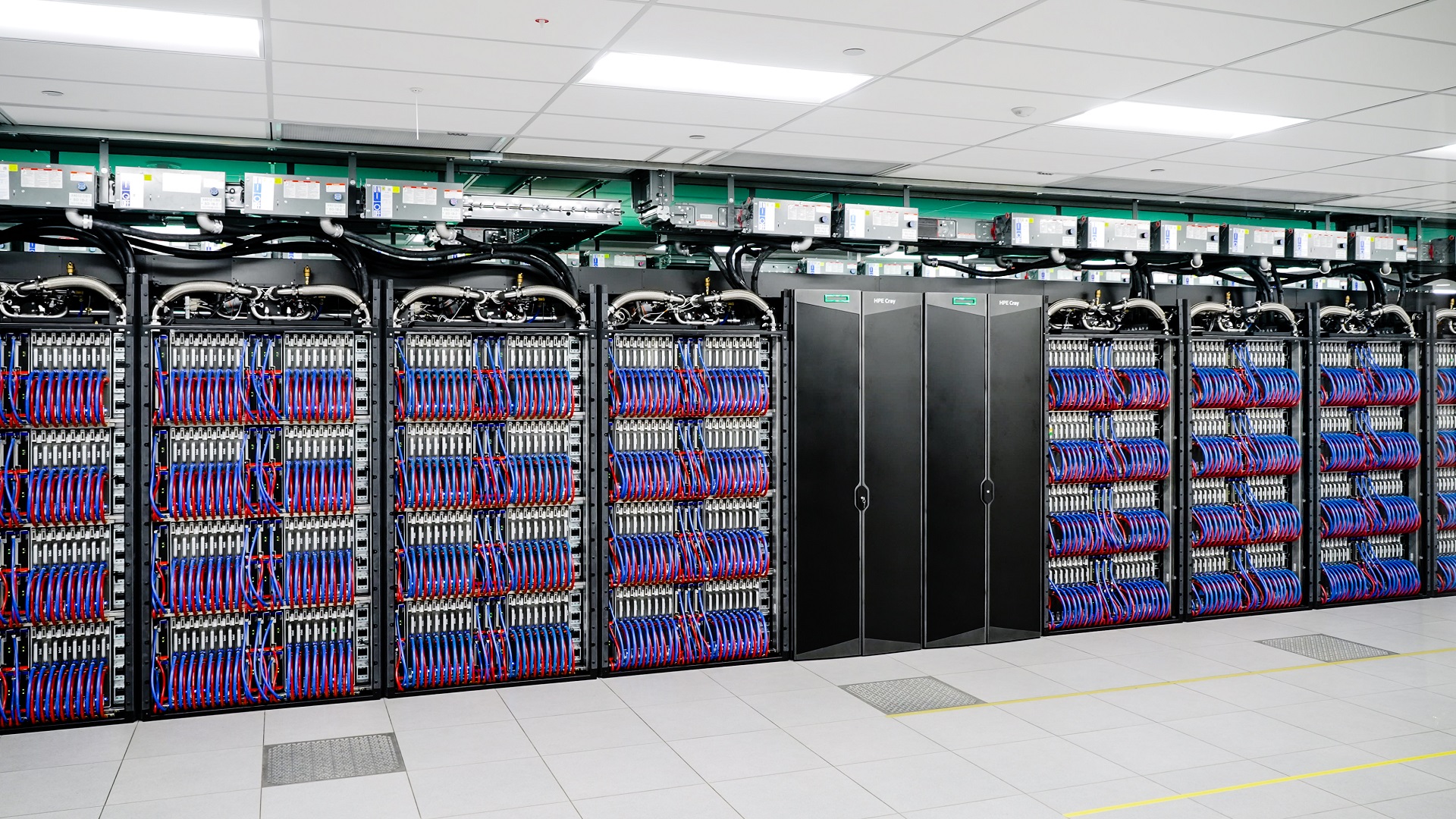
Supercomputers are a tool that enable scientists to conduct research that couldn’t be done otherwise. In particular, simulations allow scientists to study phenomena that are too large, too complex, too dangerous, too small, or too fleeting to study using experiments or observations.
DOE’s national laboratories have supercomputing facilities available to researchers from industry and academia. Widespread access to these resources allows public investments in state-of-the-art technology to have the maximum benefit to the American people.
DOE currently operates three exascale computers: Frontier at the Oak Ridge Leadership Computing Facility (OLCF); Aurora at the Argonne Leadership Computing Facility (ALCF); and El Capitan at Lawrence Livermore National Laboratory (LLNL).
The DOE’s Office of Science manages the user facilities that host Frontier and Aurora. Frontier opened for operations in 2022 and Aurora will in 2025.
The National Nuclear Security Administration’s (NNSA’s) El Capitan is officially the world’s most powerful supercomputer and the first exascale machine dedicated to national security. This tremendous leap forward in high-performance computing further enhances NNSA’s ability to ensure America’s nuclear weapons are safe, secure, and reliable without returning to explosive nuclear testing.
These supercomputers can conduct over 1,000,000,000,000,000,000 floating point operations (a form of calculation) a second. In comparison, it would take everyone in the world doing simple math problems for five years straight to complete a similar number of calculations by hand that an exascale computer can complete in one second. El Capitan’s 20-fold increase in computing performance over its predecessor allows it to create complex, high-resolution 3D simulations that used to take weeks in just hours.
Exascale computers are particularly well-suited to use artificial intelligence and machine learning for research. Applications include understanding patterns of cancer across the country, modeling plasma in a fusion device, and simulating galaxies to understand the cosmos.
DOE also supports a number of other supercomputers that take on projects that are essential to DOE’s mission. These supercomputers are at the Office of Sciences’ National Energy Research Scientific Computing Center (NERSC) user facility at Lawrence Berkeley National Laboratory, the National Energy Technology Laboratory, Los Alamos National Laboratory, Lawrence Livermore National Laboratory and Sandia National Laboratory. Scientists are working to connect scientific instruments that collect massive amounts of data – like X-ray light sources – to these computers so scientists can receive and examine data in real-time. With these access to these supercomputers, researchers can tackle topics ranging from the structure of the proton to nuclear deterrence.
The work requires multi-disciplinary teams of experts. Researchers that specialize in specific areas – like chemistry, materials science, or medical research – collaborate with computer scientists to tackle the biggest challenges in those fields. Several Nobel Prize winners have used DOE supercomputers to conduct parts of their prize-winning research.






